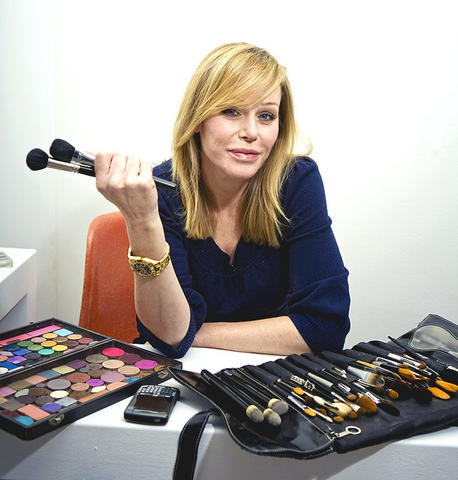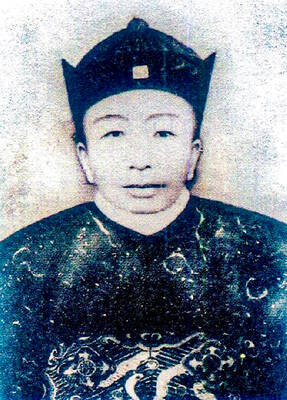As celebrities began kicking models off magazine covers in the late 1990s, editors found that more and more women wanted to know how to get Drew's or Gwyneth's dewy cheeks or smoky eyes - and who made the look possible.
The makeup artist Kevyn Aucoin, who died in 2002, piqued interest in his profession by publishing books full of techniques he used on his celebrity clients-cum-friends. In turn, cosmetics companies started seeing the celebrity potential of the makeup artists themselves, a tendency that increased as the Internet created a new way for companies to sell their products. Most major cosmetics company Web sites now feature how-to videos from star makeup artists.
Within this increasingly competitive sport, the last year was a hectic one, with many of these players' contracts expiring. Gucci Westman, the A-Rod of makeup artists, recently parted with Lancome, where she bore the title of international artistic director, and Sandy Linter arrived. Troy Surratt, an Aucoin protege, just completed a three-year contract at Maybelline, where he appeared in commercials.

Meanwhile, gone from Chanel are the longtime makeup directors Dominique Moncourtois and Heidi Morawetz, making room for Peter Philips and a new title, global creative director. Tom Pecheux is now at Ralph Lauren Beauty, having left Shiseido; Dick Page, often mobbed by quote-hungry beauty editors at fashion shows, took over there as artistic director.
According to Polly Blitzer, a former magazine beauty editor who next month is starting beautyblitz.com, an online magazine, makeup wearers are starting to recognize the names behind makeup brands in much the same way that people now go to restaurants because of certain chefs.
"It used to be that these artists were behind the scenes, but now they're the front men," Blitzer said.

Besides lending credibility and cachet to brands and offering makeup tips, these artists often create internal training videos, talk to the press, make appearances and aid in product and packaging development. They generally make it their job to perpetuate the idea that any woman can be a paragon of pulchritude and happiness if she can find the right shade of foundation.
Here are two of the most respected beautifiers in the field, and how they affect the contents of your cosmetics bag.
MATIN MAULAWIZADA: Editor's Choice
He is considered one of the most honest opinion-givers in the industry - a dog-eared card in many a beauty editor's Rolodex.
Maulawizada, who is from Afghanistan, has a reputation for spending quality time on the telephone with reporters, carefully considering products' pros and cons, rather than dashing off an e-mail message.
He has been a spokesman for Neutrogena, with the title of cosmetics science expert, since early 2007. Neutrogena doesn't forbid Maulawizada from speaking about other brands.
This helps him keep up good relationships with editors who want his candid opinions, but who also might be interested in finding out that he used only Neutrogena products when he did Jessica Biel's makeup at last year's Oscars.
Maulawizada, 43, has a bachelor's degree in physiology from the University of California, Berkeley. But when it came to choosing a profession, he decided to pursue makeup, which he had begun doing to make money while in school.
Amy Synnott-D'Annibale, the beauty director at InStyle magazine, said: "Because of his science background, he understands products in a way that I think most makeup artists don't. He understands the chemistry behind the makeup as well as the aesthetics."
JOANNA SCHLIP: Link to the Stars
When she moved to Los Angeles in 2000 after doing makeup in Europe for 15 years, "I couldn't get work because my work was too avant-garde," she said.
But Kim Cattrall saw her portfolio and gave her a shot; the rest of the Sex and the City stars followed suit. Today, her clients include Laura Linney, Ellen Pompeo and Christina Applegate. If there's a major red-carpet event, you can be sure that Schlip is there, brush in hand.
The drugstore brand Physicians Formula hired Schlip as its spokeswoman in 2006, after the publication of her step-by-step book, Glamour Gurlz.
The company, known for color-correcting products, has a nonsexy name and ad campaigns devoid of celebrities, but when it hired Schlip, its celebrity quotient got a boost.
"She complements the news that we bring to the marketplace because she's actually using our products on her celebrity clients," said Geri Lieberman, the vice president of marketing at Physicians Formula.
Schlip, 41, is also a spokeswoman for La Mer in Asia, and for Crest Whitening products.
"It all comes back to the celebrity factor. People will eat or drink or wear anything that has been celebrity-endorsed," Blitzer said. "But having someone like her also helps Physicians Formula on the more practical side."
Because "she's done celebrity faces that have to withstand wind and rain on red carpets and flashbulbs on shoots," Blitzer said, she can help advise the company on what product features might be most desirable.
Schlip has appeared several times on Oprah Winfrey's show, and her connections make her popular with the media.
"She brings an energy and a laid-back LA-beauty vibe to all of her makeup looks and tips," said Eleanor Langston, a beauty editor at Self magazine. "Even if you're not hitting the red carpet, her tips can translate into your daily life."

The canonical shot of an East Asian city is a night skyline studded with towering apartment and office buildings, bright with neon and plastic signage, a landscape of energy and modernity. Another classic image is the same city seen from above, in which identical apartment towers march across the city, spilling out over nearby geography, like stylized soldiers colonizing new territory in a board game. Densely populated dynamic conurbations of money, technological innovation and convenience, it is hard to see the cities of East Asia as what they truly are: necropolises. Why is this? The East Asian development model, with

June 16 to June 22 The following flyer appeared on the streets of Hsinchu on June 12, 1895: “Taipei has already fallen to the Japanese barbarians, who have brought great misery to our land and people. We heard that the Japanese occupiers will tax our gardens, our houses, our bodies, and even our chickens, dogs, cows and pigs. They wear their hair wild, carve their teeth, tattoo their foreheads, wear strange clothes and speak a strange language. How can we be ruled by such people?” Posted by civilian militia leader Wu Tang-hsing (吳湯興), it was a call to arms to retake

This is a deeply unsettling period in Taiwan. Uncertainties are everywhere while everyone waits for a small army of other shoes to drop on nearly every front. During challenging times, interesting political changes can happen, yet all three major political parties are beset with scandals, strife and self-inflicted wounds. As the ruling party, the Democratic Progressive Party (DPP) is held accountable for not only the challenges to the party, but also the nation. Taiwan is geopolitically and economically under threat. Domestically, the administration is under siege by the opposition-controlled legislature and growing discontent with what opponents characterize as arrogant, autocratic

Desperate dads meet in car parks to exchange packets; exhausted parents slip it into their kids’ drinks; families wait months for prescriptions buy it “off label.” But is it worth the risk? “The first time I gave him a gummy, I thought, ‘Oh my God, have I killed him?’ He just passed out in front of the TV. That never happens.” Jen remembers giving her son, David, six, melatonin to help him sleep. She got them from a friend, a pediatrician who gave them to her own child. “It was sort of hilarious. She had half a tub of gummies,